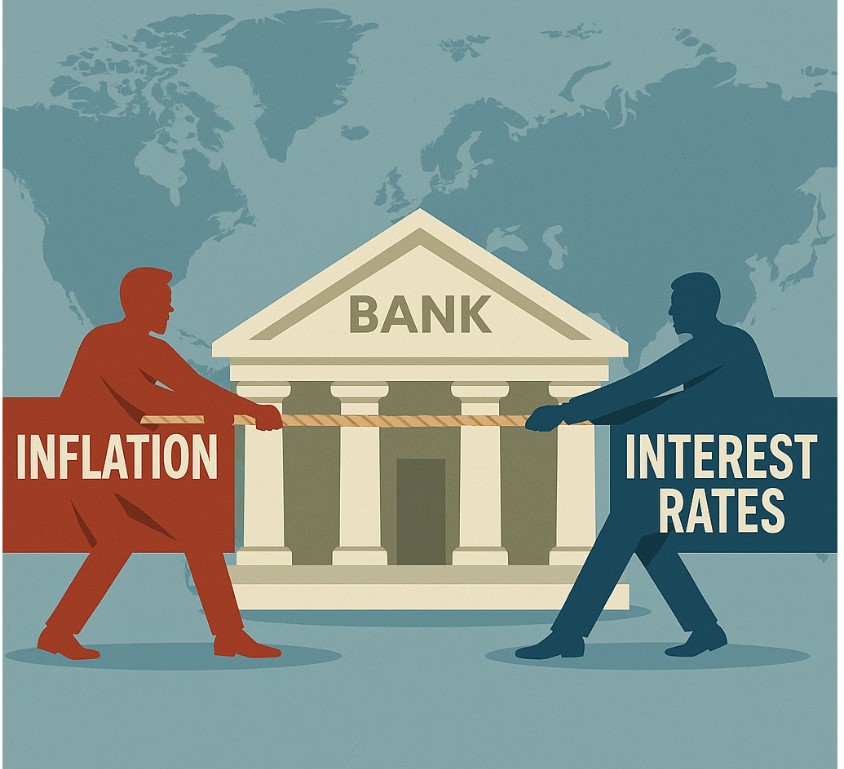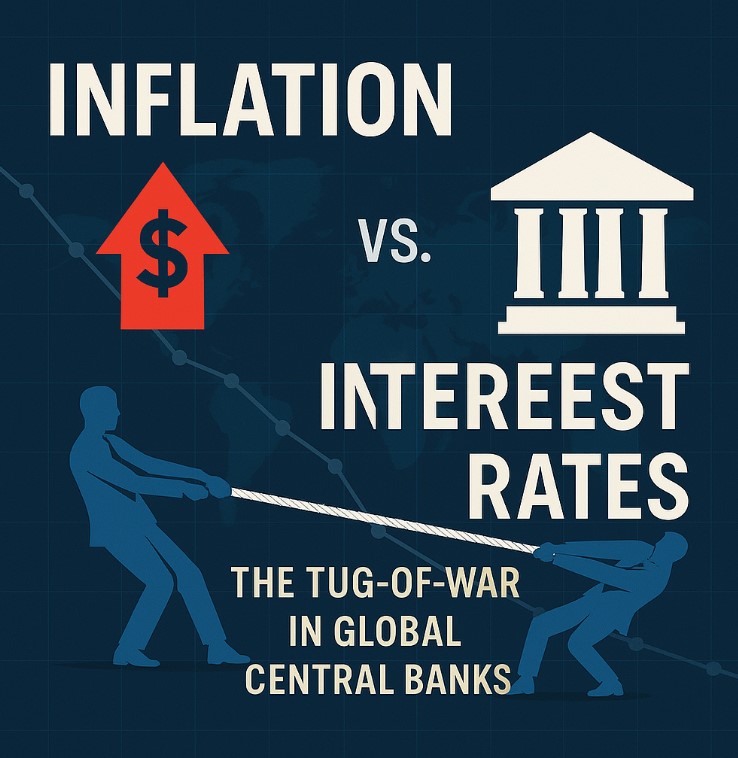
Inflation vs. Interest Rates: The Tug-of-War in Global Central Banks
Wanna know how inflation and interest rates shape the global economy? If you think these economic tools are just theoretical, think again. They have a direct impact on your investments, savings, and even your day-to-day spending. The tug-of-war between inflation and interest rates is not just a central banking strategy; it’s the battle for economic stability.
Inflation and interest rates are like two sides of a seesaw, constantly shifting as global economies face different pressures. Central banks around the world are tasked with managing this delicate balance to maintain price stability and economic growth.
Inflation and interest rates are two powerful forces that shape the global economy. While inflation can erode your purchasing power, interest rates act as a lever for central banks to control economic growth. The delicate balance between these forces is a constant tug-of-war that determines the financial stability of nations—and directly impacts your savings, investments, and even daily spending.
The Inflation Dilemma
Inflation is the general rise in prices of goods and services. While a small level of inflation is often seen as a sign of a growing economy, too much inflation can erode purchasing power and hurt consumers and businesses alike. For central banks, the trick is to manage inflation within a healthy range—typically around 2% in many developed economies.
When inflation begins to spiral out of control, it signals that the economy is "overheating," and the central bank may intervene to slow things down.
The Role of Interest Rates
Interest rates are one of the primary tools central banks use to control inflation. By adjusting the cost of borrowing money, central banks can influence spending and investment:
- Higher interest rates make borrowing more expensive and saving more attractive. This tends to reduce consumer spending and business investments, cooling down the economy and helping to curb inflation.
- Lower interest rates encourage borrowing and spending, which stimulates economic activity. This is typically done during periods of low inflation or economic stagnation.
The Tug-of-War: The Balancing Act
Central banks, like the Federal Reserve or the European Central Bank, are constantly walking a fine line:
- Too much inflation? They raise interest rates to cool down the economy.
- Too little inflation? They lower interest rates to stimulate growth.
But the battle doesn't end there. Global factors, like supply chain disruptions or geopolitical tensions, can add to the complexity. For example, rising commodity prices may push inflation higher even when interest rates are already elevated.
And that’s not all. The ripple effect of central bank actions on global markets is significant. When the Federal Reserve raises rates, for instance, it often causes the value of the dollar to rise, which can affect trade balances and foreign investments.

Why It Matters to You
For businesses, inflation and interest rates affect everything from costs of raw materials to profit margins. For consumers, it means your mortgage rate, car loan, and savings can all be impacted by the rate decisions made by central banks.
Your pocketbook, retirement savings, and investment portfolio are all on the line. Rising interest rates can lower bond prices and potentially reduce the value of stocks, while inflation can erode the real returns on your savings.
Key Takeaways:
- Inflation is a necessary evil for growth, but unchecked inflation can harm the economy.
- Interest rates are the central bank's primary tool to manage inflation and economic stability.
- The delicate balance between inflation and interest rates is a constant tug-of-war that requires careful maneuvering.
- Global factors often complicate the relationship, making central bank decisions crucial for the overall economic health.
The Central Banks' Mission:
To keep inflation in check, encourage growth, and ensure stability—without tipping the scale too far in either direction.
Conclusion: As global economies evolve and external factors continue to disrupt markets, the game of managing inflation and interest rates will only become more complex. As an investor, business owner, or consumer, staying informed about these shifts can help you make smarter, more strategic decisions.
Ready to dive deeper into how inflation and interest rates impact your financial world? Keep watching the central banks, and you might just get ahead of the curve.
Ever wondered how inflation and interest rates impact your wallet and investments?
